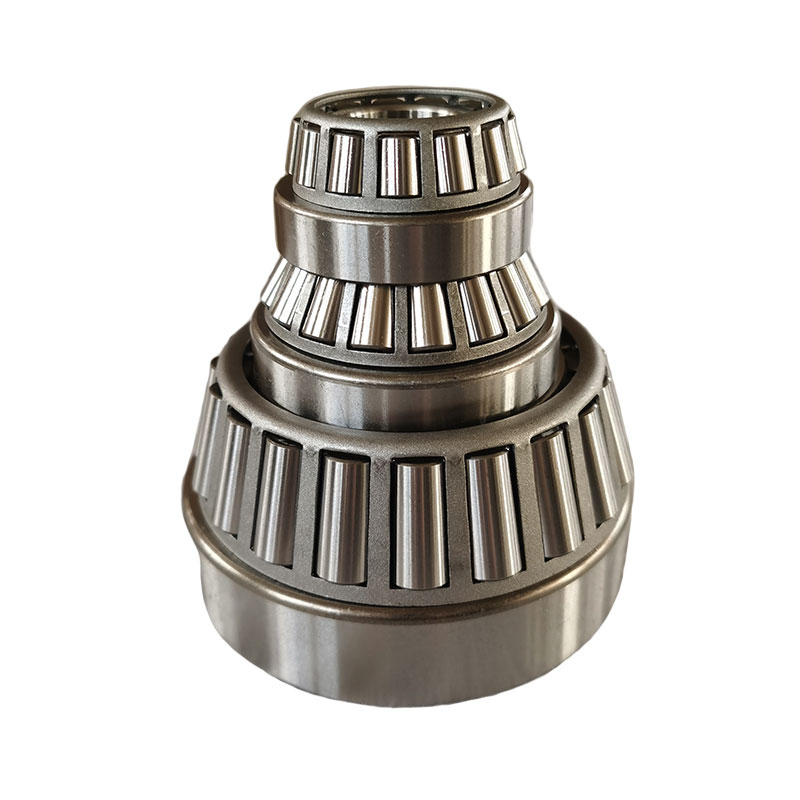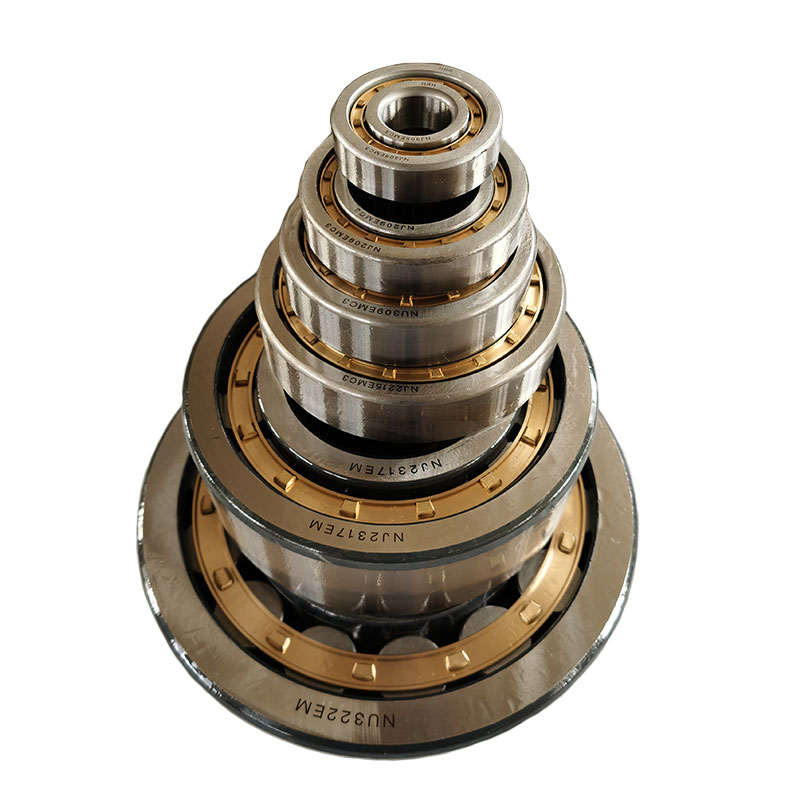Roller bearings have linear contact, rather than point contact, which gives them greater load carrying capacity and higher impact resistance. The rollers themselves come in a variety of shapes, namely cylindrical and tapered.Tapered roller bearings can withstand large thrust loads. Cylindrical roller bearings can only withstand limited thrust loads.
Tapered Roller Bearings
Tapered roller bearings are radial thrust rolling bearings whose rolling bodies are tapered rollers. There are small taper angle and large taper angle two kinds. Small taper angle mainly bear radial load, mainly radial and axial combined load. Often used in pairs, reverse installation. Inner ring and outer ring can be installed separately. Installation and use of radial and axial clearance can be adjusted; large taper angle is mainly subjected to axial and radial combined load, mainly axial load. Generally not used to bear pure axial load alone.
Features of Tapered Roller Bearings
Low friction, low noise, low vibration.
Long service life.
Improved operational reliability even under severe conditions.
Short break-in period and reduced temperature peaks.
Separate and interchangeable components for easy mounting, dismantling and maintenance.
Tapered roller bearings can carry radial and axial loads in one direction, which is greater than radial ball bearings.
Tapered roller bearings have a wide range of applications, especially in automobiles.
Application of Tapered Roller Bearings
Tapered roller bearings have tapered inner and outer ring raceways with a tapered roller arrangement between them. The projection lines of all the tapered surfaces converge at the same point on the bearing axis. This design makes tapered roller bearings particularly suitable for combined (radial and axial) loads. The axial load capacity of the bearing is mainly determined by the contact angle α; the larger the angle α, the higher the axial load capacity. The angle is expressed by the calculation coefficient e; the larger the value of e, the larger the contact angle, the more suitable the bearing is for axial loads. Tapered roller bearings are usually separated, that is, the tapered inner ring assembly consisting of inner ring with rollers and cage assembly can be installed separately from the tapered outer ring (outer ring). Tapered roller bearings are widely used in automotive, rolling mill, mining, metallurgy, plastic machinery and other industries. For more information, please refer to the roller bearing catalog.
Cylindrical roller bearings
The rolling body of cylindrical roller bearings is cylindrical in shape. The internal structure of cylindrical roller bearings uses parallel arranged rollers. Spacers or spacers are mounted between the rollers to prevent tilting of the rollers or friction between the rollers, effectively preventing the increase of rotating torque.
Features of Cylindrical Roller Bearings
Low Friction
The open flange design together with the roller end design and surface treatment promotes the formation of a lubricant film, resulting in lower friction and higher axial load carrying capacity.
Long Service Life
Logarithmic roller profile reduces edge stress at roller/rail contact and susceptibility to misalignment and shaft deflection.
Increased Operational Reliability
Surface treatment of the roller and raceway contact surfaces contributes to the formation of a hydrodynamic lubrication film
Separable and Interchangeable
The separable parts of Nicer cylindrical roller bearings are interchangeable. This provides ease of mounting and dismounting as well as maintenance checks.
High Speed Capability
The cage design is suitable for high speeds, rapid acceleration and peak loads.
Cylindrical roller bearings are self-contained bearings that are easy to mount and dismount. Cylindrical roller bearings can withstand large radial loads and are suitable for high speed use.
Are you interested in learning more about roller bearings for sale and how they can benefit you? Contact us today to secure an expert consultation!


评论
发表评论